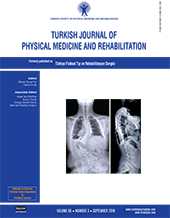Validation and application of the International Classification of Functioning core set for spinal cord injury in the Turkish patients
Patients and methods: One-hundred and twenty patients with SCI were included in this prospective and descriptive study. ICF data were primarily collected by conducting interviews with patients as well as from their acute medical management records, physical examination findings and laboratory measurements. The percentage of participants and the frequency of the problems encountered at each level of ICF category were reported. Furthermore, the construct validity was evaluated by calculating the Spearman correlation between the ICF categories and other generic and disease specific measures.
Results: The study illustrated that 55 of the 63 ICF categories of the Component Body Functions (CBF) and each and every category for the Component Body Structures (CBS) as well as the Component Activities and Participation (CAP) were reported as a problem among the Turkish patients with SCI. Furthermore, 24 ICF categories for the Component Environmental Factors (CEF) were determined as a facilitator while 6 ICF categories were identified as a barrier. The ICF–Core Set for SCI illustrated a high construct validity with some of the generic and disease-specific measures.
Conclusion: Our results identified the common problems, complications and special needs in a Turkish population with SCI. We suggest that the application of ICF-Core Set in our patients provided us with a unique capability to assess their every aspect of disability, health and functioning.
Keywords : Construct validity; ICF-Core Set; spinal cord injury

















